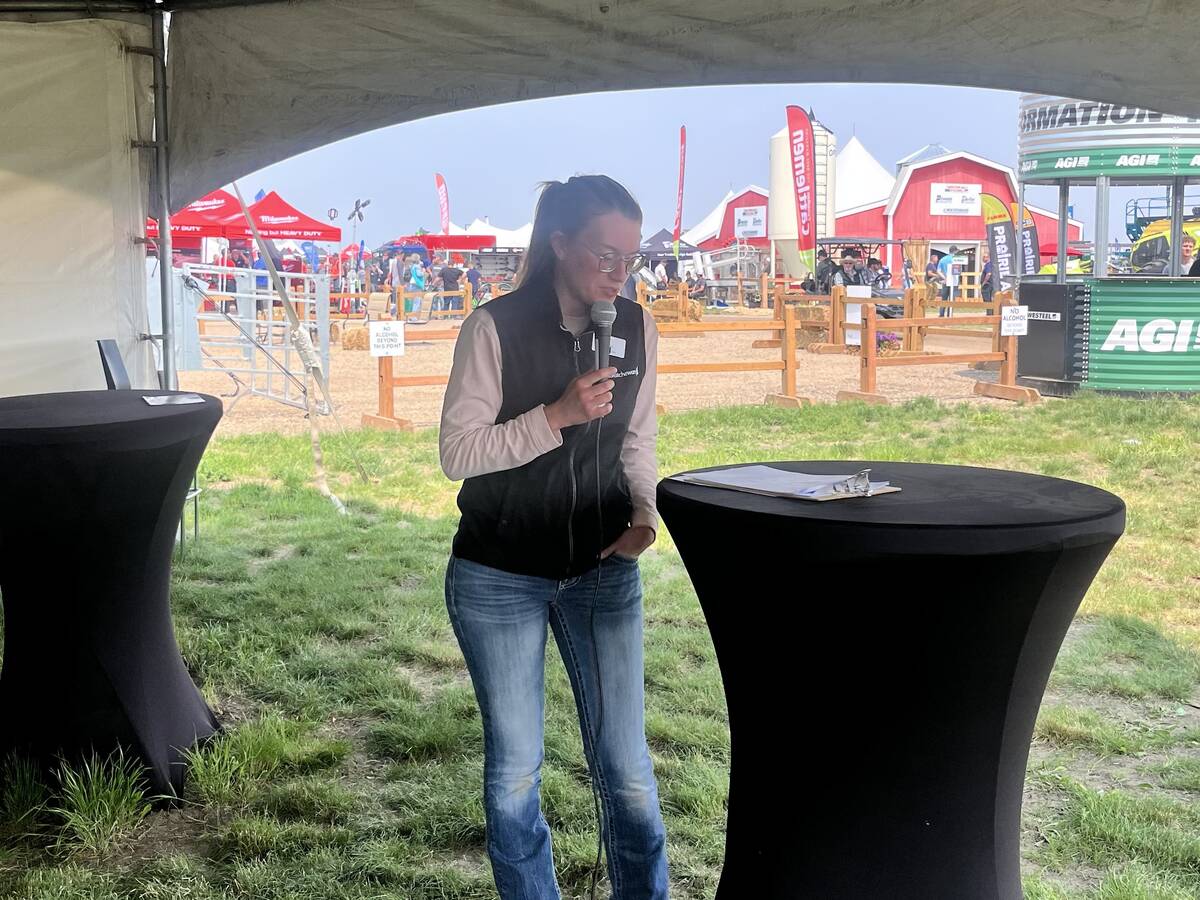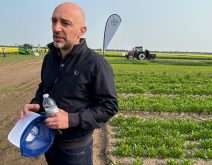Quill Lake, Sask. – It once symbolized the Canadian farmer’s struggle and has now become the workhorse of Saskatchewan farmers feeding the world’s poor.
Farm activist Nick Parsons of Farmington, B.C., drove the Prairie Belle more than 11,000 kilometres over two trips – one to Victoria in 1998 and another to Ottawa in 2001 to protest the poor economic state of Canadian farmers and rally support.
Earlier this year he donated the Massey Ferguson combine to the Big Quill Canadian Foodgrains Bank community growing project.
On Oct. 10, Prairie Belle harvested oats in east central Saskatchewan.
Read Also

Ag in Motion speaker highlights need for biosecurity on cattle operations
Ag in Motion highlights need for biosecurity on cattle farms. Government of Saskatchewan provides checklist on what you can do to make your cattle operation more biosecure.
Tom Morton, a Massey equipment dealer at Quill Lake,
Sask., for 20 years, thinks it has found a good home.
Dressed in old-time threshing gear and cap and driving a 1964 Ford Meteor, the 87-year-old came out to drive the
Prairie Belle, visit with friends and neighbours and help with the harvest.
“I feel it’s a wonderful deal to try to feed the hungry world,” said Morton, his eyes red rimmed and watering from the wind that whipped up dust from the whirring machines.
Dwarfed by the mammoth combines supplied by local equipment dealers and farmers, the Prairie Belle was too short to reach the B-trains and instead augered its load onto a smaller grain truck.
Morton said the 1981 model is not yet ready for the museum.
“It’s in very good condition for its years,” he said.
A steady stream of cars and trucks flowed through the harvest site during the afternoon, with volunteers and onlookers stopping for hot chocolate and doughnuts at a trailer anchored near the highway that runs between Watson and Wadena.
Quill Lake cattle producers Rose and Marie Kienle spoke to friends from the cab of their truck while watching the combines at work this cool, sunny day.
“It reminds me of the days when people helped one another and everyone pitched in,” Rose said of the event.
Project co-ordinator Mike Humenny said the harvest often draws more people but poor weather delayed combining in the area this year and forced many to work in their own fields.
Hopping down from the combine, he said organizers are expecting an average crop this year.
“It’s going through the machine quite well,” said Humenny, who noted the oats
will be transported directly from the field to the elevator. The crews moved
onto a second field later in the day, scooping up overall yields of 91 bushels per acre.
Last year, snow fell and stayed by mid-October and delayed the project’s harvest until this spring.
The Quill Lake Hutterite colony had already swathed the 280 acre field, which was rented to the foodgrains bank by farmer Chris Armstrong.
The Big Quills project is one of 26 Saskatchewan projects representing 7,500 acres, said Dave Meier, foodgrains bank co-ordinator for Saskatchewan.
The organization is a partnership of churches established in 1983 as a Canadian-based Christian organization providing food and development assistance to people in need.
Meier, who climbed into a combine cab for a round, hoped this quarter section would return $30,000, which the Canadian International Development Agency would then match four to one to bring it up to $150,000.
“That can feed 5,000 people for six months,” he said.
This year, CIDA increased its contributions limit to the foodgrains bank
to $20 million.
In 2006-07, the foodgrains bank had more than 200 growing projects across Canada, representing 15,000 acres and yielding more than 17,000 tonnes of crops. The projects raised $7.1 million, with $17.5 million provided by CIDA.
Meier said Zimbabwe is the focus of this year’s donations, noting the country has only a two days’ supply of food in reserve.
Last year, the foodgrains bank provided assistance to Kenya and Sudan.
















